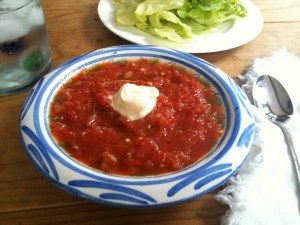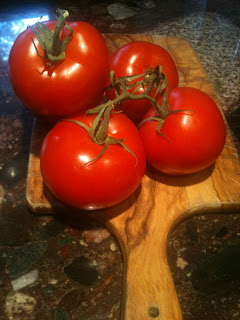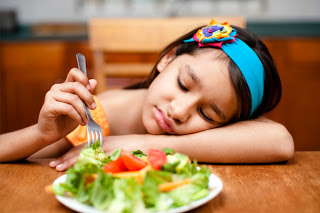This article comes to us from a leading nutritionist, Rachel Berman, RD, CSR, CD/N, the Director of Nutrition for CalorieCount.com (a healthy-living website with more than three million members)
Healthy Game Day Swaps
Besides watching the game and enjoying the commercials, Super Bowl snacking is a one of the main attractions of game day. In fact, Americans consume more calories during the Super Bowl than nearly any other day during the year – second only to Thanksgiving!
We all know the major culprits. One serving of nachos can add up to more than 550 calories and 30 grams of fat, while a serving of chicken wings packs in 440 calories and 26 grams of fat. So, instead of mindlessly eating your way through a Super Bowl celebration, try utilizing the following tips:
To save on saturated fat:
Add more beans instead of meat to a chili recipe, look for reduced-fat cheese for nachos, and swap Greek yogurt for sour cream when making dips and spreads
Make a healthier version of chicken wings by baking chicken tenders that are lightly seasoned with your favorite spices – and serve reduced fat blue cheese.
To save on refined carbohydrates in lieu of chips:
Serve a big crudite platter with interesting veggies like artichoke hearts, radishes, mushrooms, grilled asparagus, and jicama and pair with hummus or salsa.
Make a healthier version of chips by slicing whole-wheat pitas into wedges and then lightly toasting these in the oven
To save excess calories:
Beer, even light beer, can pack on the calories. It can also lead to mindless munching. Keep track of how much you drink and steer clear of any specialty cocktails prepared with juice or soda.
When it’s time for kick-off, relax and enjoy the celebration – but keep an eye on portion size and make a plate of food when hungry instead of grazing throughout the day.
Plus, check out CalorieCount.com for great game-day recipes, such as:
Mango Salsa (41 calories, 0g fat)
Tomato & Basil Pita Pizzas (199 calories, 2g fat)
Cucumber Dip (5 calories, 0g fat)
Taco Cups (137 calories, 2g fat)
Rosemary Cheese Biscuits (131 calories, 5g fat)
Oven-Fried Onion Rings (79 calories, 4g fat)
Chicken Taquitos (159 calories, 5g fat)
Broiled Buffalo Chicken (218 calories, 8g fat)
Additional Story Concepts
Really Reading the Packaging
Understanding nutrition facts can be confusing. In fact, according to a Nielson report released today, 59 percent of consumers around the world have difficulty understanding nutritional labels on food packaging. In addition, the packaging on many of so-called “healthy” products can be even more misleading. Rachel can discuss what key items to identify when reading nutrition labels – and can also share tips for what misleading marketing language to look out for when shopping.
For Example: Not all granola bars are created equal! Be weary of granola bars that are low in fat as sometimes these may actually be higher in sugar – and might not be the healthiest option.
National Grapefruit Month (February)
Not that we need an excuse to enjoy grapefruit – especially as it’s packed with nutrients antioxidants – but February is National Grapefruit Month. Rachel can provide the complete nutritional breakdown for this super-healthy fruit and share recipes and tips for ways to enjoy grapefruit at any meal.
For Example: Grapefruits are not just a breakfast item – they are an excellent accompaniment to a variety of dishes like an Avocado and Grapefruit salad.
American Heart Month (February)
Heart disease is the number one cause of death in the United States. American Heart Month opens the door for discussions about heart health, diseases that put your heart at risk – and things we can all do to improve the heart’s health. Rachel can share expert advice specific foods, exercises and lifestyle choices to improve heart health.
For Example: Choose proteins that are low in saturated fat and avoid eating red meat (or save it for a special treat) and get creative with meals – try serving these ginger-honey glazed barbecued chicken breasts on whole-wheat rolls for a satisfying and heart-healthy BBQ option.
Kid-Friendly Family Eating
Eating healthy while maintaining a busy schedule is tricky enough – but if you have a few picky-eaters in the family (whether it be kids or spouses) preparing regular, wholesome meals can be even more difficult. Rachel can provide suggestions for ways to engage the entire family in healthy eating, tips for how to “sneak” nutrition into kid-friendly foods and recipes for quick and delicious family meals.
For Example: To keep everyone happy, try “sneaking in” fruits and veggies to your meals – toss chopped or dried fruit into chicken, tuna and turkey salads and add chopped-up vegetables (or frozen spinach) to sauces.
Bio: Rachel Berman
Rachel Berman, RD, CSR, CD/N is the Director of Nutrition for Calorie Count, a free health and wellness website with over 3 million members. Rachel provides users with practical science-based information related to nutrition, weight loss and health.
Rachel has worked with various patient populations in the clinical setting for almost a decade. Most recently she was the dietitian for Columbia University’s Eating Disorder Day Program where she planned meals and provided nutritional counseling to individuals. In addition, Rachel is active in social media to promote credible health information on the internet.
Rachel is a member of the American Dietitian Association and is Board Certified in Renal Nutrition. She received her Bachelor’s degree in Nutritional Sciences from Cornell University and conducted her dietetic internship at North Shore LIJ Health System in Long Island, New York.





